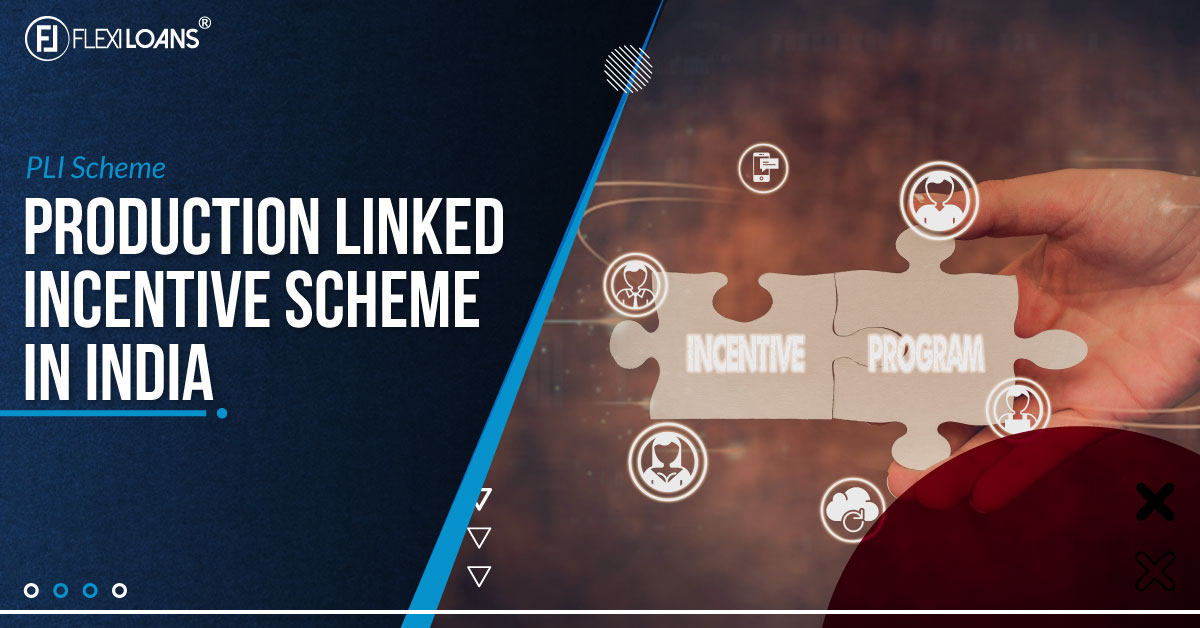Nov 18, 2021
Nov 09, 2022

Imagine you are the government and want to increase production of a specific item that isn’t particularly in high demand. However, you believe that everything will be fine once it is mass-produced or sold at the appropriate price point.
For instance, compared to competing nations, domestic electronics hardware manufacturing suffers from a lack of a level playing field. Due to the lack of adequate infrastructure, domestic supply chain and logistics, high financing costs, insufficient availability of quality power, industry’s limited design capabilities and focus on R&D and inadequacies in skill development, the sector is disabled by 8.5 to 11 percent.
PLI or a production-linked incentive scheme can help in this situation. The PLI scheme is a well-known and widely used tool by governments to stimulate production of goods deemed necessary for social good, taxation or job creation.
What is a PLI scheme?
PLIs are essentially business incentives that are intended to increase production of a particular type of product. They could take the form of tax breaks, lower import and export duties or better terms for land acquisition. In most cases, the benefits of a PLI scheme are passed on to end users in the form of lower prices.
Take, for example, electric vehicles. They are not in high demand at the moment, but the country must transition to greener automobiles. In this regard, the government has what is known as the FAME scheme. It stands for “Faster Adoption and Manufacturing of Hybrid and Electric Vehicles”. This scheme provides numerous benefits to EV manufacturers.
The Indian government recently identified 13 priority sectors for PLI schemes, with a total investment of INR 2 trillion. Electronic or technology products, pharmaceuticals, telecom and networking products, food products, high-efficiency solar modules, automobile and auto components, specialty steel, textile manufacturing, advanced chemistry cell battery, and textiles are just a few of the industries that have already been approved for incentives.
Categories of PLI scheme India
Indian finance minister Nirmala Sitharaman has announced an INR 1.97 lakh crore outlay for the PLI schemes across 13 key sectors, with the goal of creating national manufacturing champions and job opportunities for the country’s youth. In addition to the three schemes announced in March 2020, the Government of India announced 10 PLI schemes in November 2020:
Drones and Drone Components
Ministry of Civil Aviation – The industry has been waiting for the implementation of this recently approved scheme for quite some time. The scheme’s goal is to encourage production of electric vehicles and vehicle components utilizing advanced automotive technology. The goal of this programme is to bring cutting-edge technology to the sector. It also includes drones and drone components, with the goal of addressing strategic, tactical, and operational applications of the technology.
(KSMs)/Drug Intermediates (DIs) and Active Pharmaceutical Ingredients (APIs)
Ministry of Pharmaceuticals – From 2020-21 to 2029-30, the scheme aims to promote domestic manufacturing by establishing greenfield plants with minimum domestic value addition in four different target segments – two fermentation-based and two chemical synthesis-based – with a total investment of Rs 6,940 crore.
Large-scale Electronics
Ministry of Electronics and Communications – The PLI scheme will provide a 4% to 6% incentive on incremental sales of goods manufactured in India. These incentives will be available for a period of five years following the base year (FY 2019-20). To receive incentives under the scheme, which has a USD 5.5 billion budget, applicants must meet minimum investment and production thresholds as well as the eligibility criteria.
Medical Device Manufacturing
Department of Pharmaceuticals Products for Electronics and Information Technology: Ministry of Electronics and Information Technology – The programme will provide a 5% bonus on incremental sales of medical devices manufactured in India (over the base year: FY 2019-20). Incentives under the scheme will be available for five years, from fiscal year 2020-21 to fiscal year 2025-26. Applicants must meet minimum investment and production thresholds as well as the eligibility criteria.
Telecom & Networking Products
Ministry of Telecommunications – The program’s goal is to bring the country one step closer to becoming a hub for telecom and networking equipment manufacturing. This development will automatically compensate for the niche market’s reliance on imports. While 36 applications are being reviewed, major global players have expressed a desire to expand in India as a result of these incentives. A total of USD 40 million is expected to be invested by the approved investors.
Food Products
Ministry of Food Processing Industries – This scheme received positive feedback from investors of all sizes. In this case, the inclusion of contract manufacturers, who play an important role in the industry, was a key differentiator. This scheme has received about 275 expressions of interest, which are currently being evaluated with results expected soon. Overall, the scheme is expected to increase food processing capacity by more than USD 4 billion and exports by USD 3.5 billion.
White Goods (ACs & LED)
Ministry of Industry Promotion and Internal Trade High-Efficiency – Originally intended for the production of finished goods like air conditioners (ACs) and LED lights, this scheme was restructured and announced for the production of AC and LED light component manufacturers. The incremental and investment-related sales thresholds set forth here are higher than industry norms, and pose a challenge to a number of manufacturers. Applications for this programme were accepted until September 15, 2021.
Solar PV Modules
Ministry of New and Renewable Energy – Currently, the country is heavily reliant on solar PV module and cell imports. Many prospective investors have expressed interest in the scheme, which was created to address this issue. If this scheme is successful, it will reduce import dependence in a critical sector such as electricity, increasing its importance.The program also promotes local procurement, resulting in a virtuous circle of incentives. This will boost ancillary unit output while benefiting the entire solar PV manufacturing ecosystem. The USD 2 billion investment in the scheme is expected to result in the construction of 10,000 MW of integrated solar PV manufacturing plants. This scheme’s application deadline was September 15, 2021.
Advance Chemistry Cell (ACC)
Ministry of Heavy Industry – Despite its undeniable importance, renewable energy remains a niche market. Despite the numerous applications, India is currently investing very little in this space. Under the scheme, investments for the establishment of 50 GWh of ACC manufacturing facilities in India will be approved through a bidding mechanism (plus an additional 5 GWh for niche ACC). This will help in the development of batteries for electronics, electric vehicles (EVs), renewable energy power grids, and other applications.
Textile Products
Ministry of Textiles – India’s goal has been to increase its share of global textile exports. This, however, is not yet possible due to structural constraints. This program’s goal is to encourage the production of apparel made from man-made fibers and technical textiles. Surprisingly, the scheme’s goal is to promote apparel manufacturing rather than imported input textiles. In response to industry feedback on investment thresholds and other parameters, the scheme recently underwent structural changes. It will now be made public soon.
Specialty Steel
Ministry of Steel – Currently, specialty steel imports cause a significant outflow of foreign exchange. The scheme aims to address the issue at its root by promoting end-to-end manufacturing. This move could put India on par with global steel behemoths like Korea and Japan. The scheme will benefit both integrated steel plants and smaller players in the sector, with incentives ranging from 4% to 12%. The detailed guidelines for this scheme are yet to be released.
Automobiles & Auto Components
Department of Heavy Industry – The PLI scheme will promote low-cost manufacture of high-value advanced automotive technology vehicles and products such as sunroofs, adaptive front lighting, automatic braking, tyre pressure monitoring systems, and collision warning systems.
Conclusion
For government grants in India, it appears that production-linked incentives will be the way forward. Identical incentives are expected to be magnified in the near future for a variety of other products.
These incentives are supplemented by other initiatives aimed at the manufacturing industry, such as state incentives, the Manufacturing and Other Operations in Warehouse Regulations (MOOWR), and the 17 percent corporate tax rate.
When combined, these provide a comprehensive financial support package to manufacturers and should be assessed as such. FlexiLoans is an Indian non-banking financial institution that provides online business loans to SMEs and MSMEs. It offers short-term business loans with no collateral requirements and competitive interest rates and terms.
Deprecated: Function get_the_author was called with an argument that is deprecated since version 2.1.0 with no alternative available. in /var/www/html/wordpress/flexiloans.com/blog/wp-includes/functions.php on line 6114
Deprecated: Function get_the_author was called with an argument that is deprecated since version 2.1.0 with no alternative available. in /var/www/html/wordpress/flexiloans.com/blog/wp-includes/functions.php on line 6114







